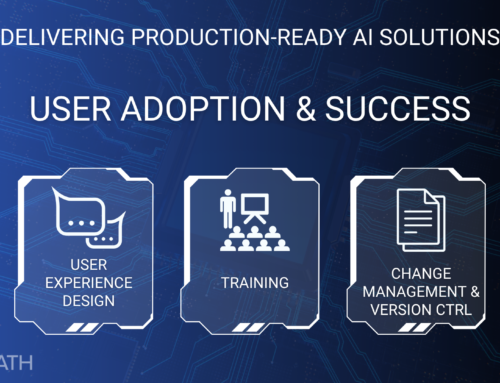Understanding strategy is crucial when selecting an AI/ML project because it ensures that the technology is aligned with the organization's goals and needs. A clear strategy helps focus efforts on solving the right problems, whether it's driving business growth, improving decision-making, boosting productivity, enhancing product quality, or reducing costs. Without a well-defined strategy, AI/ML projects risk becoming unfocused, leading to wasted resources and missed opportunities. A strategic approach ensures that the right processes, data, and technologies are in place, and that teams are equipped to deliver measurable outcomes that support long-term success.
1. Growth-Based Strategy

Objective: Drive revenue growth and expand market share using AI/ML.
- Processes: In a growth-oriented AI strategy, processes must be flexible and scalable. AI initiatives will focus on improving customer engagement, personalizing marketing, and identifying new revenue streams. Organizations may implement AI to improve customer acquisition and retention, using real-time data to adjust strategies quickly.
- People: Sales, marketing, and customer experience teams need to be aligned with AI specialists to ensure business goals are met. AI/ML experts should work alongside these teams to interpret customer data and recommend growth opportunities. Strong collaboration is key as these teams use AI to explore new markets or expand existing ones.
- Data: Customer data, market trends, and purchasing behaviors are crucial. For AI to accurately predict growth opportunities, organizations must gather diverse, high-quality data. Real-time data processing will enable businesses to make quick adjustments in marketing campaigns and customer interactions.
- Technology: The technology stack should support scalability. Cloud-based infrastructure is essential to handle spikes in customer activity and traffic. AI tools for customer segmentation, recommendation systems, and predictive analytics are critical to supporting growth initiatives.
- Roadblocks: A common roadblock in growth-based AI/ML strategies is scalability. While AI can help drive customer engagement and expand markets, organizations often struggle to handle the increased demand on their infrastructure. Additionally, poor data quality can hinder AI's ability to predict market trends or customer behavior, leading to ineffective marketing or product recommendations. Without proper alignment between AI initiatives and business objectives, growth efforts can become disjointed, leading to underwhelming results despite high investments.
2. Knowledge-Based Strategy

Objective: Enhance decision-making and foster innovation using AI insights.
- Processes: Knowledge-based AI strategies rely on analytical processes to gather insights and inform decision-making. This includes refining workflows to make data-driven decisions part of everyday operations. The process of continuous learning is crucial as AI models help teams understand trends and make predictions about future conditions.
- People: Data scientists, analysts, and business leaders must collaborate to derive actionable insights from AI. Domain experts within the organization are needed to interpret AI outputs, while leaders must ensure that these insights are integrated into strategic planning and innovation processes.
- Data: Accurate, historical, and real-time data is critical. Knowledge-based strategies depend on comprehensive data from various sources, such as internal operations, customer interactions, and external market conditions. Clean, structured data ensures that AI models can make precise predictions and offer valuable insights.
- Technology: The AI technology stack should include advanced analytics platforms and machine learning models capable of handling large datasets. Tools like business intelligence (BI) systems and AI-powered dashboards can help leaders visualize data and make more informed decisions.
- Roadblocks: One of the major roadblocks in knowledge-based strategies is integrating AI insights into decision-making processes. Organizations often have the data and technology but may lack a culture of data-driven decision-making, leading to resistance from stakeholders who rely on intuition or traditional methods. Another challenge is the complexity of interpreting AI outputs—if insights are too technical or lack context, they may not be actionable, leaving leadership hesitant to rely on them for critical decisions.
3. Productivity-Based Strategy

Objective: Increase operational efficiency and workforce productivity through automation and AI.
- Processes: Automation is at the heart of this strategy, meaning that processes must be optimized for efficiency. AI-driven tools can be used to automate repetitive tasks, freeing up employees to focus on higher-value work. Continuous improvement processes are important, where AI identifies areas that can be further streamlined.
- People: Teams involved in operations, HR, and process management will need to work with AI engineers to identify areas where productivity gains can be made. People need to be trained to use AI tools effectively, whether it's automating workflow tasks or integrating AI into daily activities.
- Data: Data on operational performance, employee productivity, and process efficiency is essential. AI models require this data to identify bottlenecks and suggest process improvements. Real-time data collection from automated processes ensures that AI can optimize in near real-time.
- Technology: AI tools for automation, such as robotic process automation (RPA) and intelligent workflow systems, are necessary. Organizations may also need cloud-based platforms that can handle the integration of AI into various departments and workflows.
- Roadblocks: In a productivity-based strategy, automation can lead to disruptions if processes are not properly adapted or if employees are not adequately trained. Resistance to change from the workforce is a frequent roadblock, especially when AI is seen as a threat to job security. Additionally, relying too heavily on AI for automation can result in inefficiencies if the technology is applied to processes that are not well-suited for automation, creating bottlenecks rather than eliminating them.
4. Efficacy-Based Strategy

Objective: Improve the quality of products or services through AI-enhanced solutions.
- Processes: Processes must focus on continuous feedback and iteration. Whether it's improving product design, service delivery, or customer support, AI is used to identify quality gaps and suggest improvements. Regular testing and performance monitoring of products or services are key.
- People: Teams working on product development, quality assurance, and customer service must collaborate with AI specialists. These teams will be responsible for integrating AI insights into product design, testing, and enhancements. Employees need to be open to feedback and iteration to improve the quality of offerings.
- Data: Customer feedback, product performance metrics, and quality data are critical to this strategy. AI models analyze this data to identify areas where products or services can be improved. Real-time data allows for faster iteration cycles, ensuring that improvements can be made continuously.
- Technology: AI technologies focused on quality control, such as image recognition, anomaly detection, and AI-powered testing tools, will be important. Additionally, systems that collect real-time customer feedback and performance data enable faster improvements.
- Roadblocks: For efficacy-based strategies, a key roadblock is balancing innovation with quality control. AI-driven improvements can sometimes push product or service changes faster than the organization's ability to thoroughly test and validate them, leading to potential issues with quality. Furthermore, gathering accurate, real-time data for continuous improvement can be challenging, especially when dealing with unstructured feedback or inconsistent quality metrics. Without this feedback loop, the AI models may fail to improve products or services effectively.
5. Efficiency-Based Strategy

Objective: Streamline operations, reduce costs, and optimize resource use using AI.
- Processes: Processes in an efficiency-based strategy should aim at reducing waste, minimizing redundancies, and optimizing workflows. AI is used to streamline operations, ensuring that tasks are completed in the most cost-effective way possible. Process improvement methodologies like Lean or Six Sigma can complement AI efforts.
- People: Operational managers, process engineers, and financial analysts need to collaborate with AI specialists to ensure resources are allocated optimally. Employees in these roles must be trained to understand how AI can drive cost efficiencies and help with resource allocation decisions.
- Data: Cost-related data, resource usage metrics, and operational efficiency statistics are essential. AI models will analyze this data to identify areas for cost reduction and optimization. Historical data is needed for AI to model more efficient operational patterns and resource allocation.
- Technology: AI technologies designed for process optimization, like predictive maintenance tools, resource planning systems, and cost-reduction algorithms, are critical. Additionally, cloud-based platforms and AI-powered systems that can monitor and optimize resource use in real-time will help ensure maximum efficiency.
- Roadblocks: A significant roadblock in efficiency-based strategies is over-reliance on AI for cost-cutting, which can lead to unforeseen operational inefficiencies. If AI models are used to optimize resources without a full understanding of underlying processes, critical functions can be under-resourced or disrupted. Another challenge is ensuring that data quality remains high, as poor data can lead to inaccurate predictions and suboptimal optimization, ultimately harming efficiency rather than improving it. Additionally, employees may resist changes if they perceive the focus on efficiency as purely cost-driven, leading to pushback.
Conclusion
Whether your organization is focused on growth, knowledge, productivity, efficacy, or efficiency, each AI/ML strategy comes with unique considerations for processes, people, data, and technology. Successful AI implementation requires aligning your workforce with AI tools, optimizing your data flows, and building technology stacks that support your business goals. By understanding and addressing these areas, organizations can fully realize the potential of AI to achieve strategic objectives.





